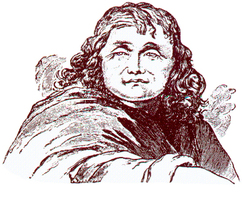 | Back to e-WV
| Back to e-WV
 The West Virginia Encyclopedia
The West Virginia Encyclopedia
 | Back to e-WV
| Back to e-WV
 The West Virginia Encyclopedia
The West Virginia Encyclopedia

Pioneer Anne Bailey’s place in West Virginia history is tied to an event that may not have happened. She is often credited with carrying gunpowder from Lewisburg to relieve a 1790 siege on Fort Lee at the site of present Charleston. Contemporary chroniclers make no mention of this siege, and subsequent historians consider the tale apocryphal. Nevertheless, ‘‘Mad Anne’’ Bailey remains a powerful symbol of the fortitude required of frontier women.
Bailey was born Anne Hennis in Liverpool, England, in 1742. How she came to Virginia is a subject of some debate; however, it is certain she lived in Staunton by 1761 and married Richard Trotter in 1765. After Richard was killed at the 1774 Battle of Point Pleasant, Anne swore to avenge her husband’s death. Some say this is when she earned the nickname “mad.” She taught herself how to shoot a gun and became a scout. She spent 11 years roaming the Western Virginia wilderness, relaying messages between frontier forts. About 1785, she married John Bailey, a Greenbrier County soldier, but she did not give up scouting.
Regardless of the veracity of the Fort Lee story, Anne Bailey’s services to frontier settlements were invaluable. When the 1795 Treaty of Greenville ended the border wars between Indians and European settlers, Bailey continued her wanderer’s life, carrying mail between Staunton and Gallipolis, Ohio. She has also been credited with driving livestock from the Shenandoah to the Kanawha Valley.
Bailey spent her last years in Gallipolis, living near her son, William Trotter. According to tradition, she refused to live in William’s house and built her own cabin from fence rails. She died on November 22, 1825, and was buried in Gallipolis. In 1901 her remains were reinterred at Tu-Endie Wei in Point Pleasant. A monument at the state park pays honor to her.
Written by Christine M. Kreiser
Hall, Grace McCartney. Anne Bailey in West Virginia Tradition. West Virginia History, (October 1955).